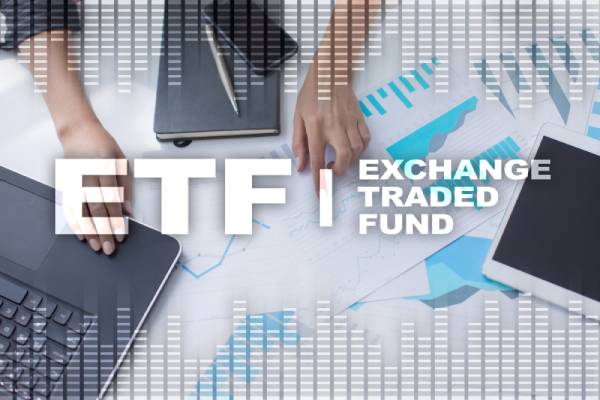Imagine NASDAQ as a rich mine for Indian investors, filled with cutting-edge firms and growth opportunities. As we delve into this, you will see how entering the NASDAQ field can significantly enhance your investment mix.
Understanding NASDAQ and Its Indices for Indian Investors
If you are from India and looking to enter the US stock market, It is vital to grasp NASDAQ and its leading indices. NASDAQ changed the game to become the first digital stock market.
Key NASDAQ indices include the NASDAQ Composite, NASDAQ 100, and NASDAQ Financial 100. The NASDAQ 100 draws lots of attention, especially from India. It has the top 100 non-finance firms and makes up over 90% of the NASDAQ Composites’ total value. This shows the power and worth of the companies in the NASDAQ 100, with major tech and other sector players drawing investors seeking growth.
The NASDAQ charm is not just about tech. It hosts a mix of sectors, offering Indian investors a passage to some of the most exciting global companies. This mix is not only by industry but also by location, as NASDAQ-listed firms operate worldwide, allowing investors to create diverse portfolios.
In my view, NASDAQ’s draw for Indian investors is its focus on future industries and the chance for solid growth. Investing in NASDAQ from India means investing in the future of tech, healthcare, consumer services, and more—a smart move that can add an international layer to our investing strategies.
Navigating these choices smartly can lead to a robust portfolio that endures time and market changes.
Direct Investment in NASDAQ Stocks from India
Let us dive into NASDAQ’s potential for Indian investors, particularly those in tech stocks. I’ll walk you through how to invest directly in NASDAQ stocks from India.
Here is a simple breakdown of the steps and perks of direct Investing in NASDAQ from India,
- You will need an overseas trading account first. Indian investors can set one up with a local broker partnered with US brokers or with a foreign broker.
- For a hands-on approach, services like Vested make it easy for Indian investors to start a US brokerage account with just a PAN number, a photo of the PAN card, and proof of address.
- Fractional shares let you invest in high-value NASDAQ stocks starting at just $1. This means you can own a part of even the most sought-after companies.
With these points, the path into NASDAQ stocks is open for those ready to step up and make choices that match their investment goals. While direct investment lets you pick individual stocks, remember that other routes, like ETFs and mutual funds, have their benefits.

Investing in NASDAQ from India via ETFs and Mutual Funds
Looking at ways Indian investors can get into the US stock market, especially NASDAQ, It is vital to know the indirect routes like Exchange Traded Funds (ETFs) and mutual funds.
Let us check out the indirect routes for Indian investors, with the advantages and options
- ETFs’ main perk is their spread across many assets. For instance, the QQQ ETF gives access to top innovative and growth-focused tech firms without choosing stocks individually.
- You can invest in ETFs that follow the NASDAQ index in India, like the Motilal Oswal Nasdaq 100 ETF and the ICICI Prudential Nasdaq 100 index fund. These aim to match the NASDAQ 100s performance, giving investors a way into US tech giants and other leading NASDAQ-listed non-finance firms.
- Besides ETFs, international mutual funds and funds of funds are another indirect investment method. These funds gather money from several investors to buy a mix of international securities, including those on the NASDAQ. Funds of funds invest in a group of mutual funds instead of single stocks, possibly giving even more diversification.
While these routes offer ease and spread, towing the investment caps under the Liberalized Remittance Scheme (LRS) is critical when reentering the US stock market.
LRS and Investment Limits for NASDAQ Investors in India
As we look at what NASDAQ offers Indian investors, It is vital to understand the Liberalized Remittance Scheme (LRS). The Reserve Bank of India (RBI) lets Indian residents send up to $250,000 each financial year for allowed transactions, which includes overseas market investments like NASDAQ. This scheme opens the door for diversification beyond India, letting investors tap into the success stories of global giants on NASDAQ. As you think about the investment caps and the chances they bring, Staying in tune with economic signs and smart investing rules is vital. This full view can help steer through the thrilling yet complex world of international investing with sureness and insight.
Diversification and Market Conditions for NASDAQ Investors
Looking into NASDAQ investing from India, I get how key it is to spread our investments across various economies. This helps lessen risks tied to just one market’s performance.
It is critical to watch out for foreign exchange risks. Changes in currency can significantly alter our investment value, so It Is Important to Keep an eye on exchange rates.
Also, it is essential to stay current on global market conditions that sway NASDAQ investments. International economic policies, interest rate shifts, and global events can profoundly affect NASDAQ. As investors, we must stay aware of these to make timely, informed choices.
While considering these points, it is also important to understand the costs involved in investing, which we will discuss next.
Read More: Listing Rule 5250(c)(1): Consequences of Noncompliance
Costs of Investing in NASDAQ fees for Indians
As Indian investors eyeing NASDAQ, It is vital to know the various costs involved. Brokerage fees are one main cost we face, paid for making trades. Some platforms may have no brokerage fees, while others might have a fixed fee or a percentage of the trade value.
Currency conversion charges are another cost. Our Indian Rupees have to be switched to US Dollars, which comes with a price. The exchange rate and conversion fees can change, affecting our investment and returns.
Some services might also charge account maintenance fees for keeping our trading accounts, which can vary based on the services offered and the account type.
Handling these costs is essential for the health of our investment. As we think about these costs, we must remember that our investment choices should be informed by fully understanding all factors that can affect our returns.
- Tax Implications for NASDAQ Investors from India
When investing in NASDAQ-listed companies, we must consider the tax side. Dividends from these investments face a withholding tax, which, thanks to the Double Tax Avoidance Agreement between India and the US, is cut to 25%. This tax can be claimed as a credit in India, preventing double taxation.
Capital gains tax is another point to consider. While the US does not tax foreign investors on capital gains, in India, long-term gains are taxed at 20% with indexation, and short-term gains are taxed as per our income tax rates.
As we consider the tax side of our NASDAQ investments, it is clear that a well-planned investment strategy that considers these points is key to optimizing our returns.
Choosing the Right NASDAQ Investment Approach from India
As an Indian investor looking at NASDAQ for investment chances, It is vital to know the different routes you can take. Each has pros and cons, and the right choice depends on your investment goals, how much risk you are okay with, and how involved you want to manage your investments.
To choose the correct NASDAQ investment route from India, consider these options and their features.
- Direct investment in NASDAQ stocks involves buying shares of specific companies. This gives you the most control and choice, as you can select stocks that fit your strategy. However, it also means higher costs from brokerage fees, currency conversion charges, and possible account maintenance fees. Plus, it requires a lot of research and active management, which might not be for everyone.
- Like the QQQ ETF that follows the NASDAQ 100 index, ETFs offer a more hands-off strategy. They hold a group of stocks and usually have lower costs than mutual funds. ETFs are also traded on the stock market, so you can buy and sell shares during the trading day at market prices. This can appeal to those who want to invest in the broader market without managing individual stocks.
- Mutual funds are another indirect way into NASDAQ. Indian investors can pick international mutual funds or funds of funds that invest in NASDAQ-listed firms. While these offer diversification and professional management, they often have higher costs. Also, mutual funds are priced once at the end of the trading day, so you do not have the same ability to buy and sell as with ETFs.
Knowing the details of each investment route can help us make informed decisions that match our financial goals.
Seizing Growth Opportunities Smart NASDAQ Investing for Indian Investors
I believe getting to know and using NASDAQ’s power can boost an Indian investor’s portfolio. We have gone through the basics of engaging with this lively market from afar and finding investing gems. Now’s the time to use our knowledge wisely. Whether through direct stocks, ETFs, or mutual funds, there are many paths and growth chances when you invest smartly.
Trade finance advice provides news, case studies and research articles on trade finance organizations. Visit https://www.tradefinanceadvice.com/ for more articles.



